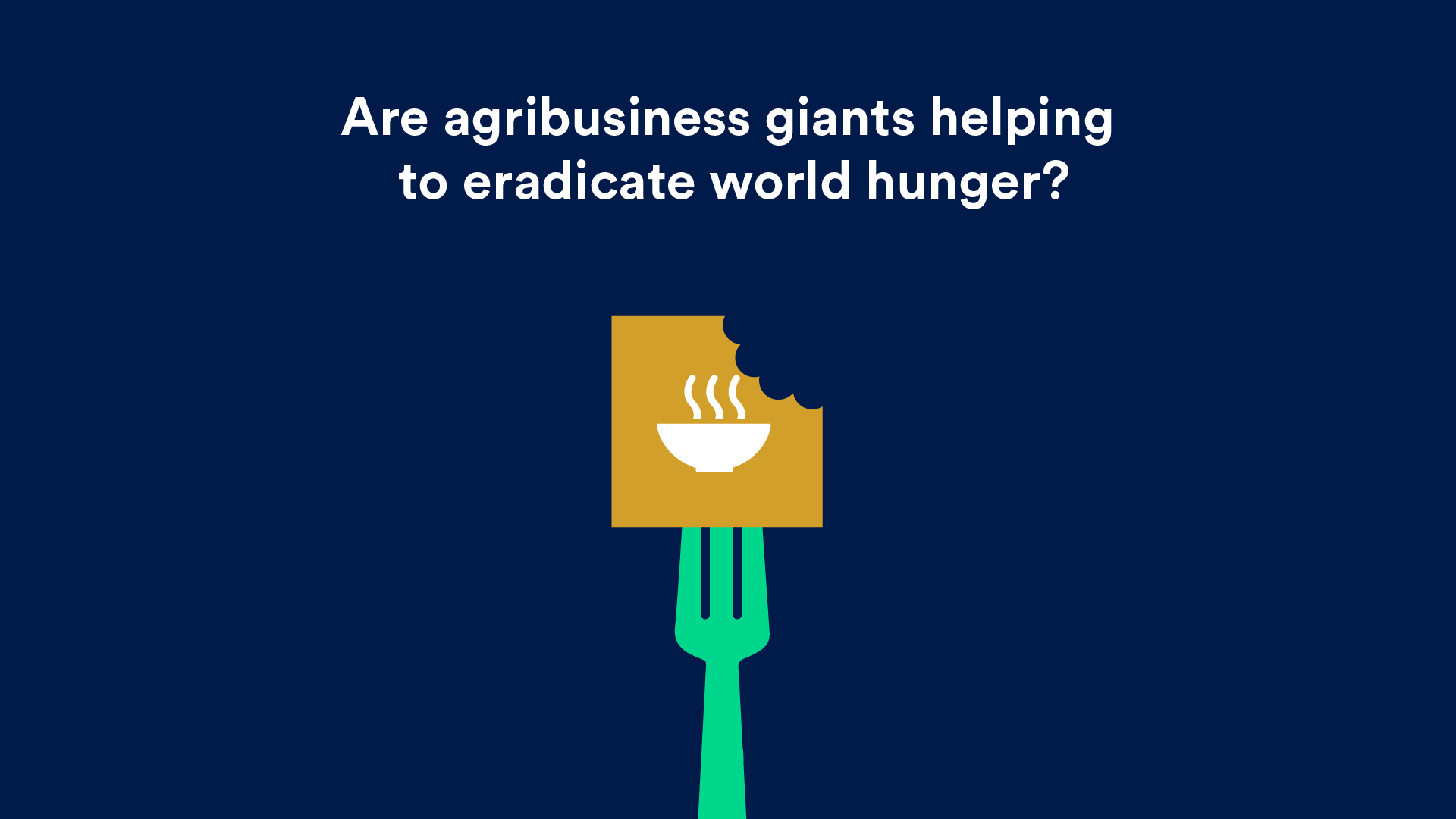impak Battle : Danone vs Nestlé
About the author: impak, the independent impact rating agency, regularly publishes content providing transparent data on the social and environmental impact of companies. By doing so, it aims to accelerate the transformation towards a stakeholder economy generating an overall positive contribution to society.
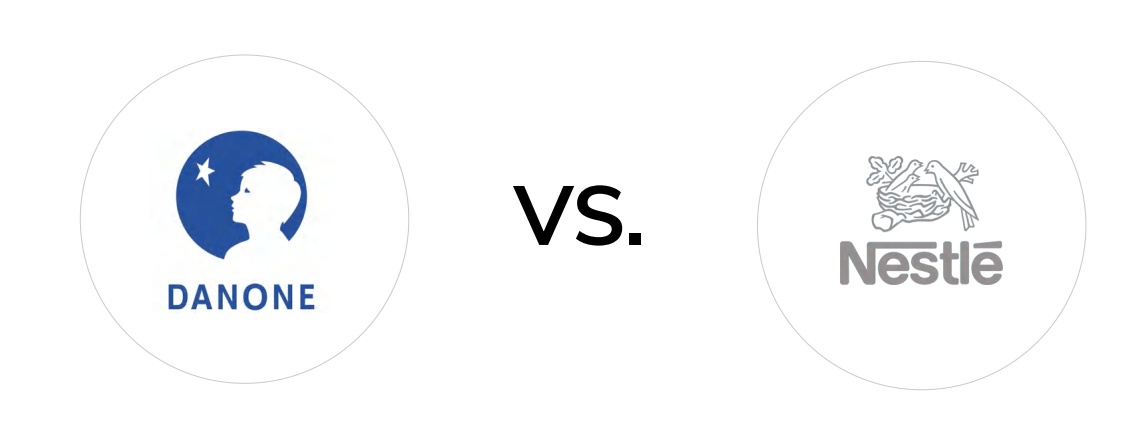
Challenges since the first lockdowns across the world have been numerous and, some, unexpected. Among many, flour shortage, hour-long line-ups to get groceries, and the fact that we now consider food plant and grocery store employees as essential workers (although many are on minimum wage). This month, because of its crucial importance, we have a closer look at the 2018 impact statements and impak ScoreTM of two agri-food companies: the French Danone and the Swiss Nestlé. The impacts they generate and their response to them tell us a lot about how they may adapt and overcome sustainably the many issues exacerbated by the global crisis.
🧫 COVID-19
Even if Danone and Nestlé’s recent COVID-19 efforts are not included in our 2018 analysis, it is highly relevant to note them. Danone implemented financial support mechanisms of €300M to its ecosystems’ farmers, suppliers, smaller customers and their Venture portfolio’s entrepreneurs. They also established many measures for employees and their families: secured jobs and wages until June 30, bonuses to key workers and extensive insurance coverage worldwide. As for Nestlé, they provided US$10,3M to the International Federation of Red Cross (IFRC), plus US$1,03M to the Coalition for Epidemic Preparedness Innovations (CEPI) to support vaccine research. They also support businesses offering free meals to key workers and vulnerable people, and match 1:1 donations made by their employees to the Red Cross.
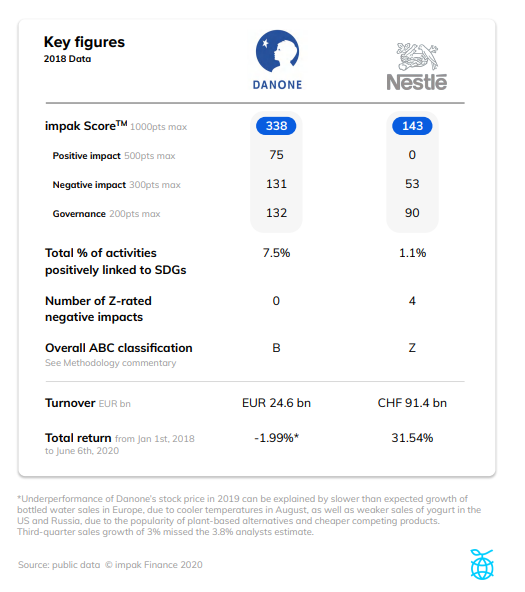
Key SDGs
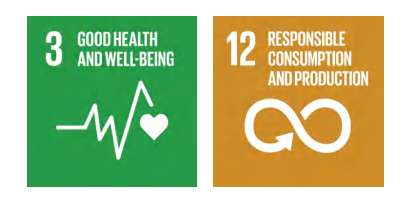
Positive impacts
Danone 75/500 Winner
Danone generates two positive impacts linked to SDGs. One is related to SDG 17: Partnerships for the goals through its activities of creation, management and financing of social innovation funds which represent around 0.23% of its assets. The second one relates to the research, development and sales of medical nutrition, and accounts for 7.5% of the revenues, which is linked to SDG 3: Good Health and well-being (non cumulative, see Methodological notes). It is also important to note that Danone’s investment fund supports other organizations tackling hunger and access to water, among many issues, but it is not considered material.
Nestlé 0/500
Only one positive impact has been identified for Nestlé, linked to SDG 3: Good Health and well-being, representing 1.08% of its activities. The activity behind this outcome relates to the production of medical nutrition products available only through healthcare providers.
Mitigation of negative impacts
Danone 131/300 Winner
Danone has 8 material negative impacts, but none that “does or may cause harm” (Z rating, see Methodological notes). This means that the company has performed an in-depth analysis and implemented mitigation strategies for all of its negative impacts. It also means that Danone has had no conviction regarding these negative impacts.
Enel 53/300
For Nestlé, here is where the gap widens. Ten material negative impacts have been analyzed, among which 4 are rated with a Z (again, does or may cause harm, see Methodological notes). Two of the Zs are related to convictions: one on a food safety incident and the other on harassment in relation to labor conditions. The third Z isn’t related to a conviction, but rather to the fact that the company doesn’t mitigate its negative impact generated by energy consumption in the whole supply chain and product lifecycle, and that its energy consumption is actually consistently increasing. The last Z is related to the negative outcome of “water withdrawal endangering local populations’ access to water”, which is obviously of crucial importance for its stakeholders, but again, the company doesn’t mitigate the issue, hence the Z rating. Additionally, Nestlé is engulfed in several scandals related to water, an issue that has been highlighted by the current coronavirus crisis.
Finally, both Danone and Nestlé inherently contribute to the negative impact related to their sector, plastic pollution, which is linked to SDG 12: Responsible consumption and production. Even if they have initiatives to mitigate this major global impact, they are still among the world’s largest plastic polluters as both sell bottled water.
Governance
Danone 132/200 Winner Nestlé 90/200
The difference still grows when looking at governance because Danone’s mission clearly includes a solution to social and environmental issues. On its part, Nestlé’s mission includes none of the above, according to the public information available. Furthermore, regarding the inclusion of stakeholders and/or independent impact experts in the decision-making process, Nestlé provides no information at all, while Danone is beginning to proceed to such inclusions. It is worth mentioning that Danone is working towards its B Corp certification and part of its activities is already certified, which shows a stronger alignment towards a social purpose.
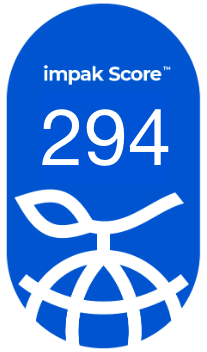
Danone wins 🎉
The conclusion of this battle seems rather evident when looking at the number of Zs, and the significant gap in sub-scores and impak ScoreTM between the French Danone and the Swiss Nestlé. The relatively low percentage of activities linked to SDGs in both cases surely gives room for improvement. This is exactly what Danone intends to do, as reflected by its May 20th declaration to become the “first listed company to adopt the French legal framework of ‘entreprise à mission’[mission-driven company]” . As for Nestlé, the company has set ambitious sustainability goals, such as specific activities to mitigate all of its negative impacts. Nonetheless, so far, Danone is the winner of this impak Battle.
Specificity of the sector
Why doesn’t SDG 2: Zero Hunger appear once in this battle despite the theme being the agri-food sector? Well, agri-food companies do provide food, but not all of us suffer from hunger. In this case, both companies show a lot of potential, but not enough data is available that would show actions specifically targeting people suffering from hunger or people that would benefit from specific nutritional value of offered products.
Methodological Notes
The data is based on both companies’ 2018 public financial and extra-financial statements, compiled using impak’s rating methodology available on impakanalytics.com, and aligned with the Impact Management Project (IMP) framework.
The methodology follows the IMP classification: A (Acts to avoid Harm), B (Benefits stakeholders), C (Contributes to solutions), and Z (Does or may cause harm). Note that according to our methodology, in the case of a Z, a certain penalty is assigned based on the following 3 factors: the type of Z (does cause harm or may cause harm), the repetition of the Z over time and, only in the case of a Z that ”does cause harm”, whether measures have been taken to mitigate this negative impact.
It is important to mention that companies may have some potential positive impacts that were not considered because of the limited information available or because they represent less than 0.01% of their activities. As positive impacts are based on their relationship to the Sustainable Development Goals (SDGs), they can overlap. The percentages of activities related to these impacts can therefore be non-cumulative.
The sub-score related to governance is based on several criteria analysing the integration of impact mechanisms within the company. Thus, the role of the various beneficiaries in decision-making, the analysis of its impacts within the value chain and the assignment of a team dedicated to the impact mission are all important criteria for this section.
Given the significant growth in transparency and sustainability among investors, one or two years can make a significant difference to impak Scores.
*VEGA Investment Managers is in no way responsible for the information contained in this article. The analysis of VEGA IM does not constitute investment advice or recommendation.
VEGA INVESTMENT MANAGERS - 115, rue Montmartre, CS 21818 75080 Paris Cedex 02
Tél. : +33 (0) 1 58 19 61 00 - Fax : +33 (0) 1 58 19 61 99 - www.vega-im.com
A public limited company with a board of directors having a capital of 1 957 688,25 euros - 353 690 514 RCS Paris- TVA : FR 00 353 690 514
Asset management company, approved by the Autorité des Marchés Financiers (AMF) under the number GP 04000045 - headquarter : 115, rue Montmartre 75002 PARIS
IMPAK RATINGS INC - 5605, avenue de Gaspé, Montréal, QC H2T 2A4
Did you find this impak Battle insightful?
Leave us your email below to receive our latest publications.
You may also like
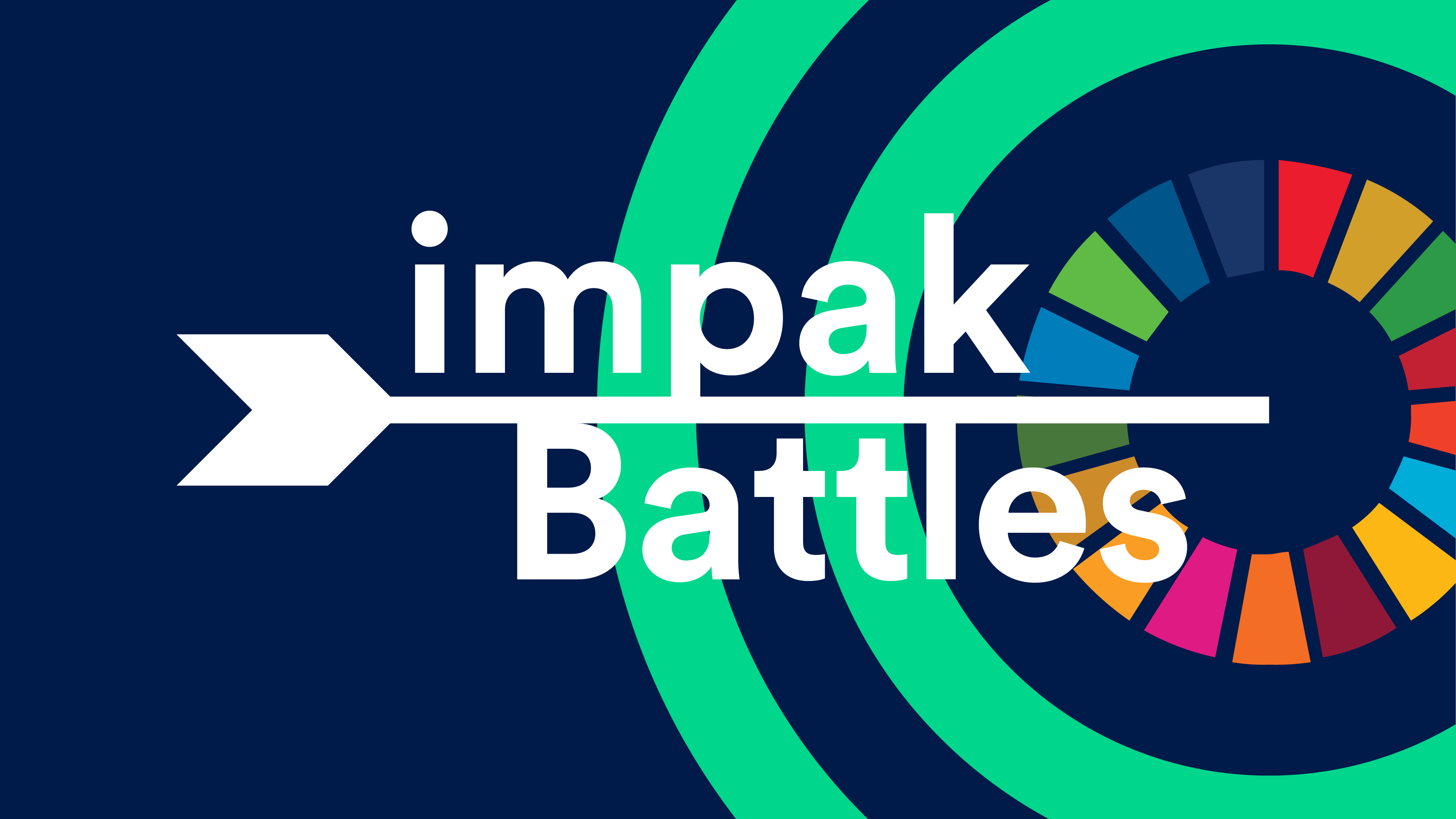
impak Battle : Air Bus vs Alstom
By impak Analytics
Are companies prepared for CSRD?
By impak Analytics